Nearly 90-year-old Vancouver football stadium packed with memories
Iconic, eclectic, unique, asymmetrical.
A lot of adjectives can be used to describe Vancouver’s Kiggins Bowl.
But few match the description Major George W. Braden gave in 1939, shortly after major construction was completed on the facility.
“I think your stadium is about the greatest monstrosity I have ever seen,” the regional parks expert said. “It is about everything it should not be. It is not much of anything except a nice lot of concrete.”
Braden would not be the last person to be perplexed at first glance by Kiggins Bowl.
Yet despite a complicated and controversial formation, Kiggins Bowl would eventually become the site of many high school football memories in Vancouver over more than seven decades.
Enlarge
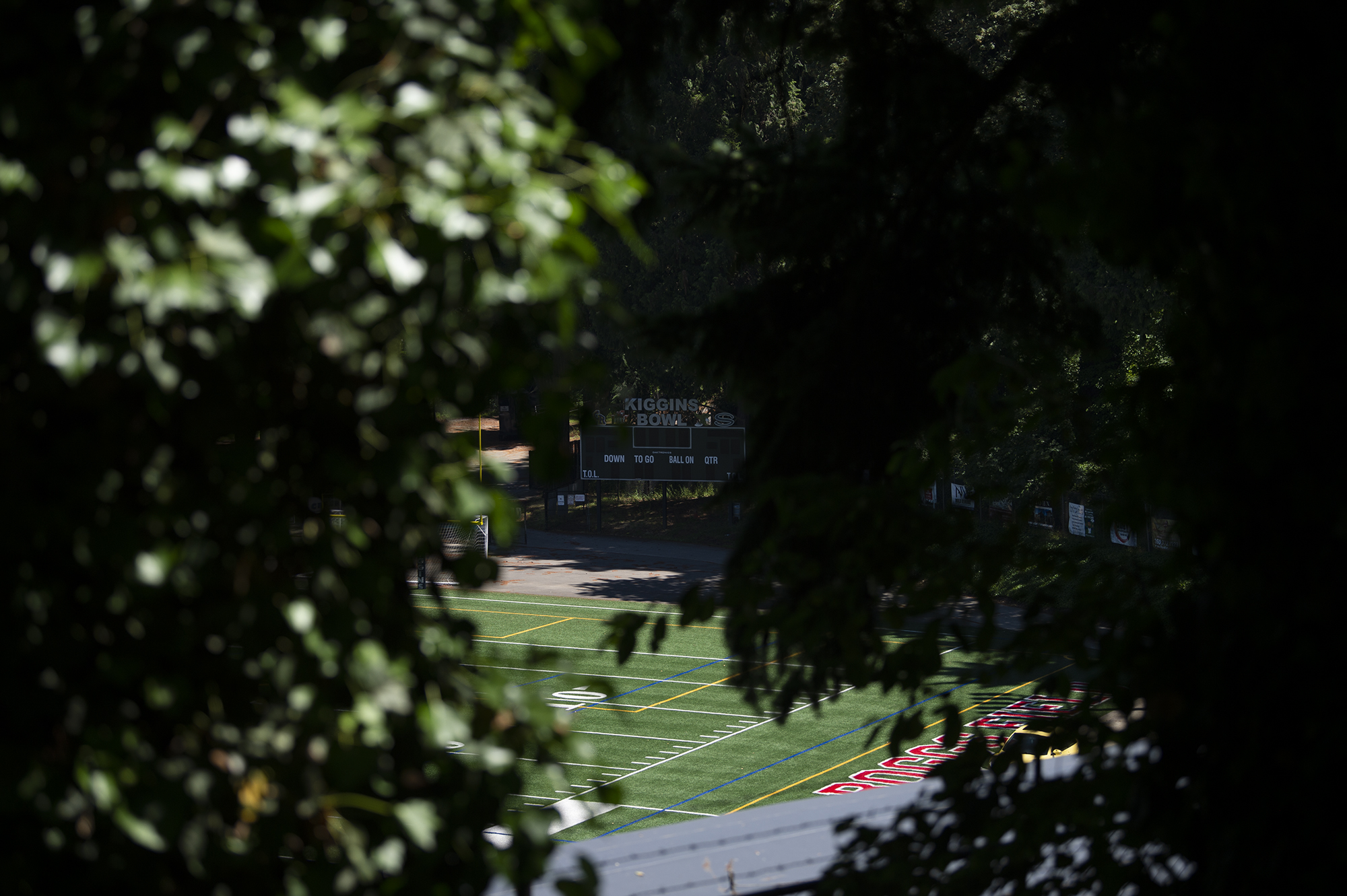
Tim Martinez of The Columbian
The beginning
The story of Kiggins Bowl began April 18, 1924, when Anna Leverich surprised Vancouver’s city council by donating a 42-acre parcel of land on the city’s northern border to be used as a public park.
Within weeks of the donation, work crews made up of inmates from the city jail were busy clearing spaces for picnics in the newly christened Leverich Park.
And even in those early days, city planners had visions of something greater.
In the May 19, 1924, issue of The Columbian, city engineer A.L Shumway noted “the natural formation of the land in this section of the park will permit construction of such an amphitheater at low costs.”
Talk of a stadium lingered for several years until those plans were put into action by J.P. Kiggins, who served nine terms as Vancouver’s mayor over four different stints between 1909 and 1938.
In December 1930, at the start of the Great Depression, Kiggins used $1,000 from the 1931 city budget to begin work on clearing a plateau of land in the park. The project provided work for 18 unemployed men.
The Columbian wrote: “The men are getting $2 a day, the best the city can do, (Kiggins) said, which will help them to get groceries. They are all men who are in dire need with families to feed.”
Kiggins repeated the effort the winter of 1931-32. But work got started in earnest in February 1933 when a crew of 50 men were employed in the park through the Allied Welfare association.
By the summer of 1933, work was completed on athletic fields big enough to accommodate three football fields and surrounded by a half-mile running track. A baseball diamond was set up at the base of the natural amphitheater.
The first sporting event was held there July 2, 1933 — an exhibition of local baseball teams. Mayor Kiggins threw out the ceremonial first pitch. The formal dedication of the athletic fields was made the following month.
Enlarge
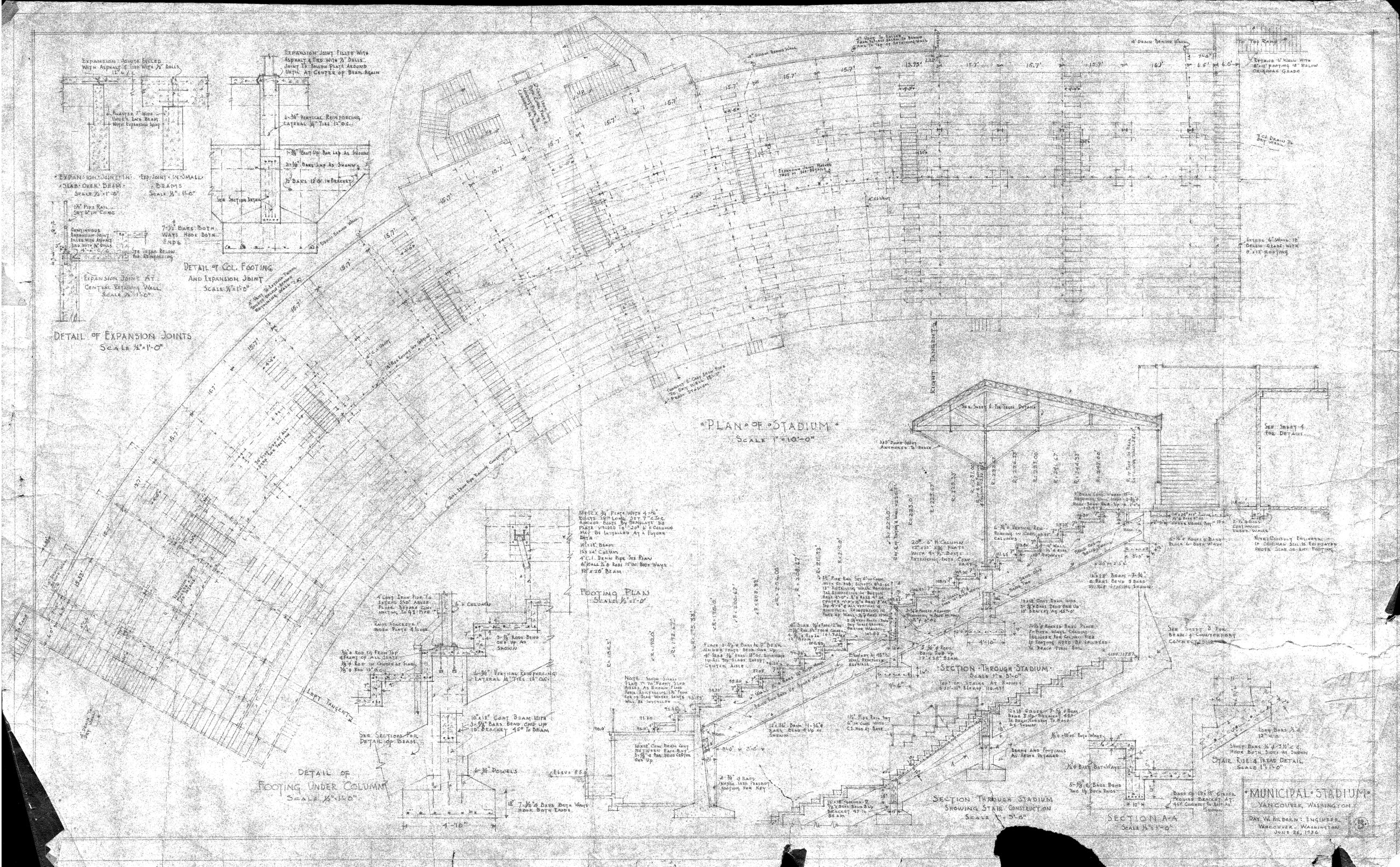
Vancouver Public Schools archive
Stadium takes shape
Little changed in the park over the next three years.
But in 1936, the city received $99,000 in federal grants through the Works Progress Administration to go to construction of a concrete stadium in the natural amphitheater in Leverich Park. The city allocated $14,000 for materials with the WPA funds covering the cost of labor.
Construction began early in 1937, shortly after Kiggins returned to City Hall for his ninth term as mayor. A sketch of the field by city engineer J.L. Henderson showed how the new grandstand could serve as seating for baseball, softball and football games, highlighting the versatility of the project the city had just invested in.
But the project was soon mired by delays, rising costs, false promises and even sabotage.
In April 1937, WPA engineers set a tentative date of completion of the stadium at June 1. But work would linger off and on for two more years. In October 1937, sabotage was suspected when a steel support cable was cut, leading to the collapse of a 40-foot high wall in the center of the stadium project.
When work on the grandstand was completed in 1939, the final price tag was about $200,000 — about $4 million today — with the city contributing $50,000.
J.P. Kiggins was voted out of office for the final time in December 1938.
Enlarge
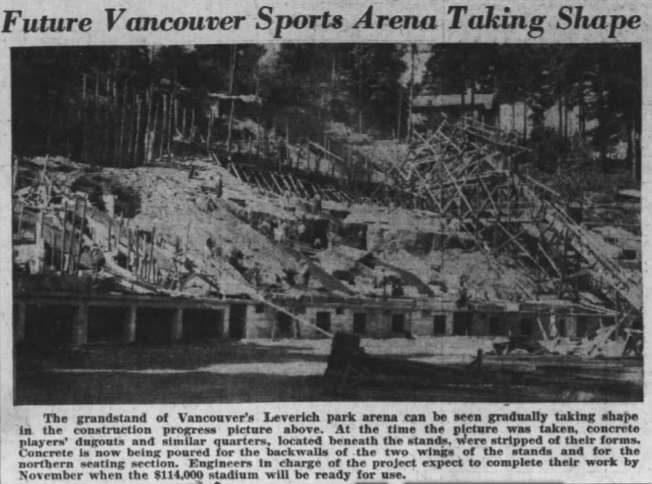
Vancouver Public Schools archive
Empty ‘monstrosity’
Under the new administration of Mayor Al Stanley, the city brought in Braden, the western representative of the National Recreation Association, in March 1939 to assess the city’s parks.
Braden pulled no punches in his assessment of Kiggins Bowl. In addition to calling it a “monstrosity,” Braden said the stadium was suited well for neither football nor baseball. He recommended the city focus its efforts on improving the fields and spend no more money on the stadium.
So when the final touches on the stadium were done, the grandstand did not include lights and was only partially covered, and the shower rooms below the stadium were not connected to plumbing.
Because of that and the city’s early resistance to allowing admission to be charged at events at Kiggins, the concrete bowl remained largely underutilized.
Large events were few and far between, although in 1941, the Kansas City Monarchs of the Negro Baseball League played an exhibition game against another barnstorming team, the House of David.
Enlarge
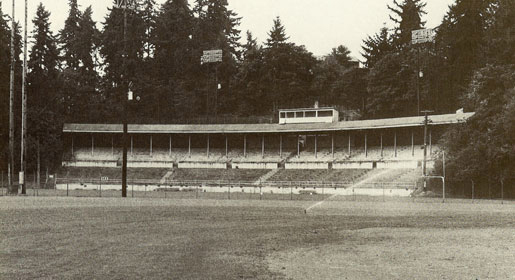
Home of prep football
World War II also contributed to Kiggins Bowl’s idle state. But in the fall of 1945, the city began discussions with the Vancouver school district about having Vancouver High School play its football games there.
“We are going to make major improvements to Leverich Park and put Kiggins Bowl back into use,” Mayor Al Sinclair said in November 1945.
The improvements included installing lights, a complete renovation of showers and dressing rooms and an extension of the roof over the entire bleacher section.
Vancouver High played its first game at Kiggins Bowl on Sept. 20, 1946, hosting Washington High of Portland. The Trappers lost to the Colonials 12-6 that night, but the stadium drew raves from the capacity crowd. The Columbian reported that one Portland newsman described Kiggins Bowl as “out of this world.”
The Columbian wrote that Kiggins Bowl “has at last come into its own. It is no longer the ‘white elephant’ of political campaigns. It is no longer the ‘forgotten stadium.’ It is no longer a ‘monstrosity.’ ”
What’s in a name?
For 15 years, Kiggins Bowl had a bit of an identity crisis.
On Aug. 21, 1933, two days after the fields were dedicated, the city council passed an ordinance stating that the facility “is hereby officially named and designated ‘Kiggins’ Stadium’ ” even though the stadium at the time only consisted of an earthen amphitheater.
That name appeared in The Columbian in the weeks after the decree, but by the summer of 1934, the newspaper began reverting to “Kiggins Bowl,” a name it first coined a year earlier.
And The Columbian made no apologies about it, writing in an editorial in December 1936: “Kiggins Bowl? Of course, that’s the name.”
The newspaper pointed out that Leverich Park would still be a wilderness if not for the vision of J.P. Kiggins. And when the paper puts a name on something, the editorial continued, it had a tendency to stick, like it did with the Evergreen Highway and Lake Merwin.
“So The Columbian is going to use its old tactics, crude though they may be, and just call Kiggins Bowl Kiggins Bowl until someday a map of the city will be redrawn and there we expect to see the name ‘Kiggins Bowl.’ ”
That didn’t happen right away. After Kiggins left office, political rival Stanley and his administration, referred to the stadium as “the Leverich Park stadium.” There was even a nameplate with that name on it directing visitors to the stadium.
In his plans for construction of the stadium in 1936, architect Day Hilborn referred to it as “municipal stadium.”
Even Kiggins didn’t use the name when running for mayor, referring instead to “Leverich Park and the athletic bowl” in campaign ads.
It wasn’t until Vancouver High began playing games there that “Kiggins Bowl” started to stick, but it still was not used universally.
In 1948, Mayor Vern Anderson sought to end that.
“I don’t think it is being done maliciously,” Anderson said. “But lately the field has been referred to loosely as Leverich Park stadium or field. I would like to ask the schools and press to be more correct and call it Kiggins Bowl.”
It has been Kiggins Bowl ever since.
Getting bogged down
When the fields were being constructed in 1933, it was pointed out that the area had “natural drainage in four directions, so that it should always be in the best of condition.”
But after the first season of high school football that proved to be inaccurate.
A variety of factors — water flowing down the slope that formed the natural amphitheater, a bed of clay that lay beneath the turf and the fact that trees obscured the field from daylight during autumn days — would create swampy conditions after the first fall rains arrived. Even in 1947, sportswriters took to calling Kiggins Bowl “the soup bowl.”
While the school district regularly attempted to improve drainage at Kiggins Bowl, by 1967 conditions had become so bad that Columbian sports editor Ralph Fisher suggested Kiggins Bowl had run its course as a site for high school football games.
“We feel that any money spent on improving Kiggins Bowl is sending good money after bad,” Fisher wrote. “We don’t think that Kiggins Bowl gridiron can ever be made into a first-class playing field with anything short of installation of the very expensive AstroTurf.”
Enlarge
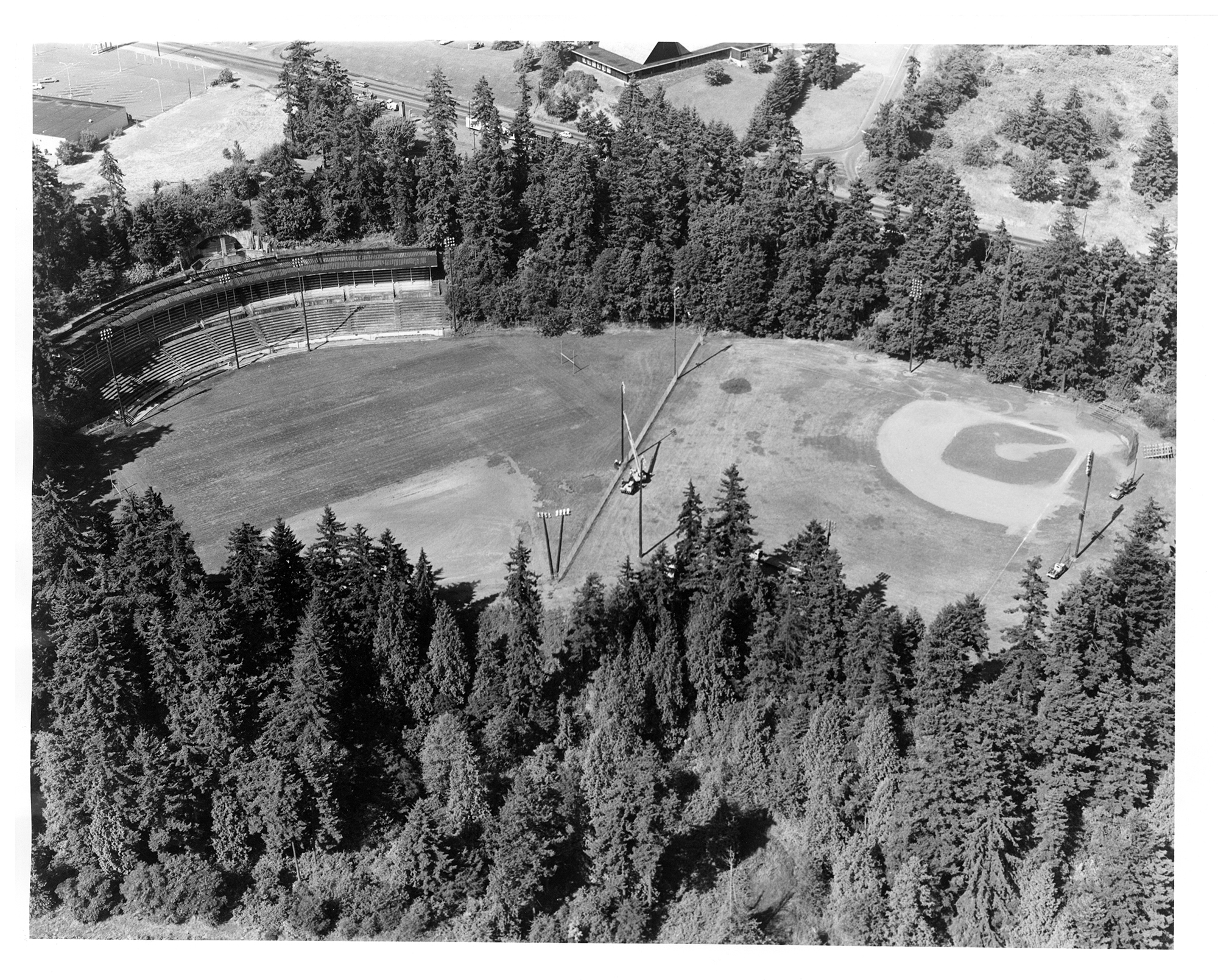
Walt Hicks/The Columbian files
In April 1968, The Columbian dedicated a full page of photos depicting a swampy field, mud-soaked football players, and leaky grandstand and locker rooms to unveil “Operation Quagmire” — a community-led fundraising project for improvements at Kiggins Bowl.
“Any parent who has suffered in the stands while their son or daughter participated in an event at Kiggins Bowl when it is raining can fully appreciate our concern,” project chairman Howard Borge said. “Many times football players have been unrecognizable after the first play because of the mud. We have seen band uniforms ruined by mud during halftime ceremonies. … Anyone who has been there knows that ‘Quagmire’ is an appropriate and conservative description.”
The campaign raised funds for major improvements at Kiggins Bowl. When work was completed, the baseball diamond, which originally sat at the east end of the Kiggins Bowl field and faced into grandstand, was abandoned.
The original light standards were moved over to the baseball diamond on the north side of the Kiggins Bowl field, and new lights were installed around the stadium. The roof over the stadium was replaced, and a new drainage system was installed under the football field.
Vancouver high school baseball teams would continue to use the diamond at Kiggins Bowl until 1994, when two fields were constructed near Hudson’s Bay High School, one of which would become Propstra Stadium in 1998.
After leasing the Kiggins Bowl property from the city since 1964, Vancouver Public Schools took ownership in 1994 to build Discovery Middle School with the blessing of Anna Leverich’s lone living heir, her 91-year-old granddaughter, Dorothy E. Postlewaite.
Enlarge
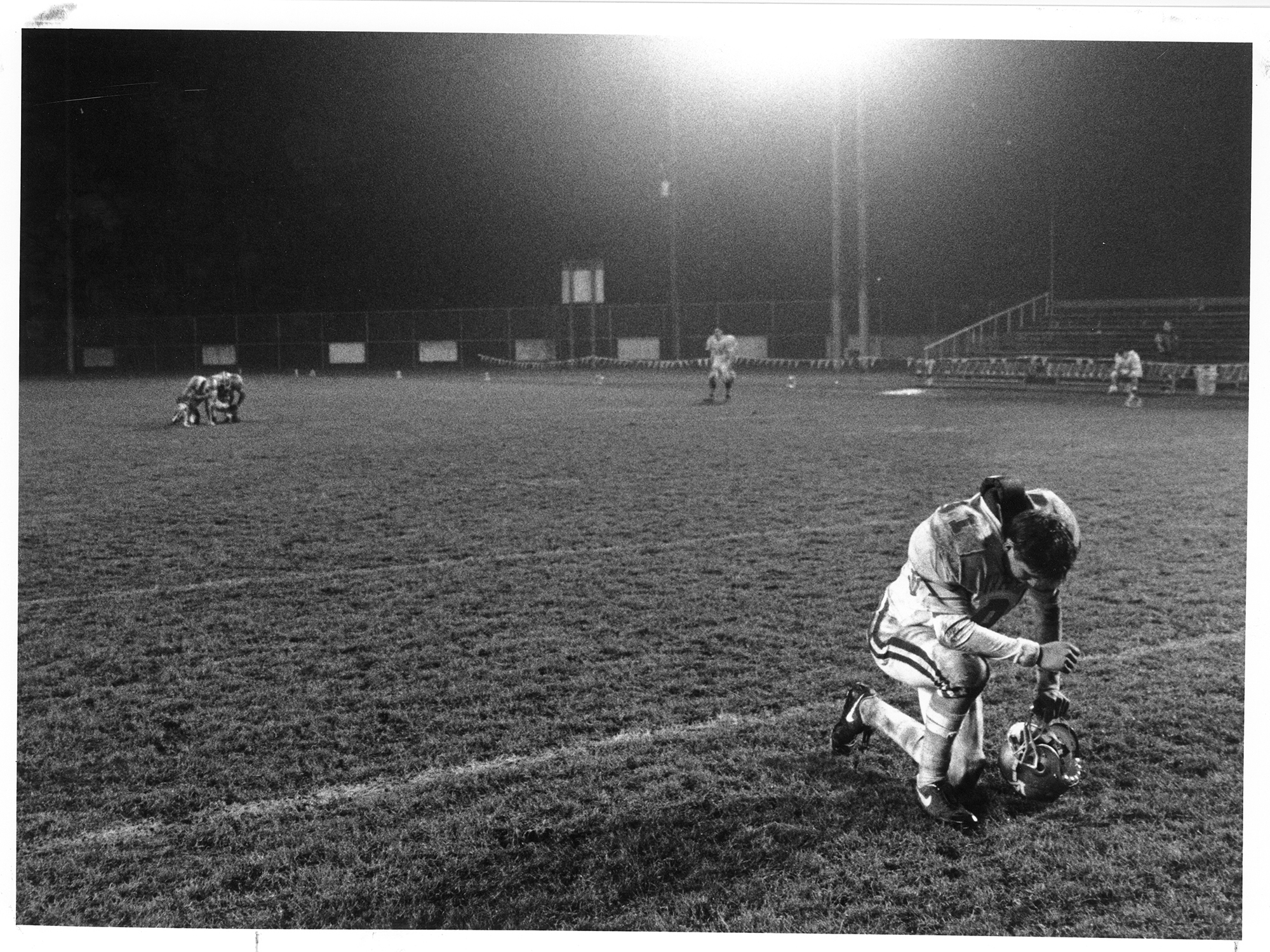
Casey Madison/The Columbian files
In 1995, school officials moved the football field 30 feet further away from the Kiggins Bowl grandstand to create a paved walkway which would allow Discovery students to reach multipurpose athletic fields built on the north end of the fields where the baseball diamond previously sat.
With four schools — Discovery along with high school teams from Fort Vancouver, Hudson’s Bay and newly constructed Skyview — set to share Kiggins Bowl, it was determined that a natural grass field could not stand up to that kind of use.
In the summer of 1997, an Action Turf field was installed, giving Kiggins Bowl the first artificial turf field in the county. On Sept. 20 — the 51st anniversary of the first high school game played at Kiggins Bowl — Fort Vancouver played the first game on the new field, hosting Camas.
“It’s a whole new era,” Fort Coach Gary Boggs said.
The final score was 49-7 … Fort Vancouver.
The artificial turf field was replaced in 2008. And in 2011, the football field was rechristened “Boggs Field” for the coach who led the Trappers from 1965 to 2000.
New changes
Fans who haven’t been to Kiggins Bowl in a while might have a hard time recognizing the old stadium.
With a 15-month improvement project reaching the final stages this summer, Kiggins Bowl looks better than it has in its nearly 90-year history.
But the stadium will still draw its detractors, folks who walk in and wonder “what was this thing built for?”
They will point out that front-row seats at the 50-yard line, normally prized in any football stadium, are nearly 40 yards from the nearest sideline. The seats higher up in the bowl that are protected by the roof on rainy nights are even farther away.
Kiggins Bowl is not perfect. Kiggins Bowl is quirky.
But after more than seven decades as a stage for high school football memories, there is one description fans and foes of the stadium can agree on.
Kiggins Bowl is uniquely Vancouver.
Assistant Sports Editor Tim Martinez delves further into the changes at Kiggins Bowl at 360preps.com.